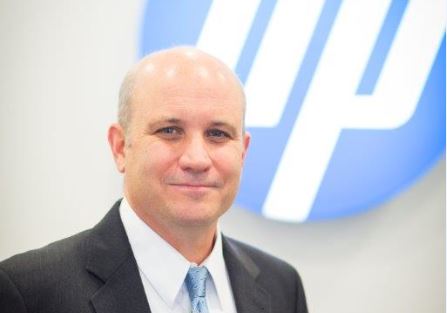
In November 2015 the 75-year-old IT giant Hewlett-Packard split into two companies, HP Inc and Hewlett Packard Enterprise (HPE).
The ensuing four months has seen both companies pushing out a range of products, from smartphones and new printers to machine learning products built in Microsoft Azure.
What each HP company does since the split is as follows: HP Inc develops and provides hardware including personal computers, printers and smartphones. It holds by units sold, according to an SEC filing about the split, the number one position in printing and commercial personal systems and number two in consumer personal systems
On the other side 50 per cent of Hewlett Packard Enterprise’s revenue was set to come from EG, spread across servers, storage, networking, and technology services. Around 37 percent of revenue is coming from Enterprise Services, while 7 percent will come from Software.
Meg Whitman became CEO of HPE and Chairwoman of HP, the latter promoting Dion Weisler as CEO.
George Brasher, MD of HP Inc in the UK since the split, said the split has provided his company with several new advantages.
"As we separated, it gave us a couple of opportunities," he tells CBR. The first, he says, was to be very focused on partners.
"Since the split people have said our split was seamless, and they feel better engaged with us. We’ve been able to be very clear and aligned with them on what our plans are.
"We created a new partner programme that allowed more partners to be Platinum Partners. We were able to change our programme to support them because we’re a more focused company."
This also applied across the channel strategy, which provides more than 80 percent of HP’s revenue.
"HP before had everything from software to ink cartridges and service etcetera. When we built our channel programmes, we had to think about how we’d fit everything. Now that we’re more focused we can put our money on things that matter to us."
The other key point where HP found a new advantage was in the ability to innovate.
"Our CEO says that when you are a focused organisation ‘you eat what you kill’," says Brasher. "We’re able to make our own investments and choose where we want to innovate.
"From our perspective it comes back to the focus on where we can put our investment dollars. We can be very specific around what we do."
Part of HP’s innovation has focused on its traditional market of printing where, it is still the leading vendor. It recently updated its printing portfolio with 15 new printers. It is working to address the issue of printer security, which Brasher claims many organisations have overlooked.
The printing giant also hopes to be a big player in the next big thing in the industry: 3D printing. It expects this, combined with its immersive computing project Sprout, to be transformational in the manufacturing and design industries.
HP‘s Elite x3 smartphone, announced last month, attempts to re-imagine the mobile device as a portable CPU. The user carries the smartphone around and simply plugs into the setup that is available, whether this be a desktop or laptop environment.
The USB-capable docking station is connected to the monitor, keyboard and mouse at a desk. The phone slots into this setup and the user starts working on it. When on the move, the user can connect the phone to the myrmidon notebook, which is wirelessly capable and has no CPU or motherboard.
According to Brasher, there were several secrets behind the successful split. Even though the companies officially separated in November, they had been operating as separate businesses in the UK since August.
Brasher says that the year-long lead-in period gave them the "proper time" to successfully manage the transition.
"We took a team, pulled people out of the business, and had separate teams focusing on driving the business. I think the teams did a good job of planning and looking at what were the key activities to do that.
"We got very close with our customers and partners, stayed on top of the process, and made sure that it wouldn’t impact them."
Brasher says that there is not a sense of friendly competition between the two parties as to which can be the most successful after the split. Agreements in the SEC filing means that neither can poach employees from the other.
"We still have a very good relationship with them. They were our first Platinum Partner. We are in different markets with very different portfolios, so rather than competition it’s about how we can help each other on a regular basis."
HP Inc wants to make the most of its "smaller, more focused team," as Brasher describes it.
How the companies are faring since the split
HP Inc
HP saw first quarter net revenue of $12.2 billion, down 12 percent from the prior-year period. Profit fell year-on-year from $0.8 billion to $0.6 billion.
Personal systems net revenue fell 13 percent year-on-year, while notebooks units were down eight percent. Desktops units fell 13 percent.
Printing revenue was down 17 percent year-on-year, with commercial hardware units down 15 percent and Consumer hardware units down 23 percent.
Hewlett Packard Enterprise
HPE reported earnings of $300m, with $12.72 billion in revenue. Revenue in HPE’s enterprise group business increased about 1 percent to $7.1bn in the fiscal first quarter ending 31 January 2016, from $6.98 billion in Q1 2015.
In the enterprise group, revenue from servers dropped 1%, storage fell 3%, networking rose 54%, and technology services declined 9%.




